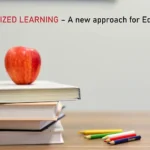In today’s rapidly evolving education landscape, “personalized learning” has become one of the most talked-about—and debated concepts. It promises a revolutionary shift from one-size-fits-all instruction to customized education tailored to each student’s needs, interests, and pace. But while the term is widely used in education conferences, tech platforms, and policy discussions, an important question remains: Is personalized learning truly effective, or is it just a trendy buzzword?
What Is Personalized Learning?
At its core, personalized learning refers to educational strategies and tools designed to meet the individual needs of each learner. This can mean adapting the content, pace, learning style, or instructional method to suit the student. It may include:
- Customized lesson plans
- Adaptive learning technologies
- Project-based learning
- Student choice in topics or assessments
- Flexible pacing
Unlike traditional classrooms where all students follow the same curriculum at the same time, personalized learning allows learners to progress based on mastery rather than age or grade level.
The Promise of Personalization
Proponents of personalized learning argue that it empowers students by giving them agency in their learning journey. For high achievers, it prevents boredom by offering more challenging materials. For struggling students, it provides the chance to review and reinforce foundational skills without the stigma of falling behind.
Technology plays a significant role here. AI-powered platforms can track student performance in real time, suggest targeted resources, and adjust instruction based on ongoing assessments. This data-driven approach makes learning more dynamic and responsive.
The Evidence: Does It Work?
The results so far are mixed but promising. Some studies have shown that personalized learning—particularly when supported by well-trained teachers and strong curriculum—can lead to gains in math and reading scores. For example, a 2015 RAND Corporation study found modest academic improvements in schools implementing personalized learning models.
However, critics point out that the evidence is still limited and sometimes inconsistent. Personalized learning is a broad concept that varies widely in implementation, making it difficult to measure its true impact. Without proper training, resources, and support, efforts at personalization can easily fall flat or become superficial.
Challenges and Criticisms
Despite its potential, personalized learning faces several obstacles:
- Over-reliance on technology: Not all students thrive in screen-based environments, and too much tech use can hinder social and emotional development.
- Equity concerns: Personalized learning often depends on access to devices and the internet, which can widen the digital divide.
- Teacher workload: Designing individualized learning paths for dozens of students can be overwhelming without strong support systems.
- Lack of clear standards: Without agreed-upon definitions and best practices, “personalized learning” can mean everything and nothing at once.
So, Is It Just a Buzzword?
Not entirely. Personalized learning is more than a buzzword—it’s a vision for more student-centered education. But like any promising idea, its success depends on how it’s implemented. When done well, with thoughtful pedagogy and equitable access, it can transform learning. When done poorly, it risks becoming a vague term used to sell educational products or mask ineffective teaching practices.
Conclusion
Personalized learning holds real potential to improve education by recognizing that every student learns differently. But it’s not a magic solution, and it requires careful planning, ongoing assessment, and a human touch. The future of personalized learning will depend not on the buzz, but on evidence, equity, and effective implementation.




